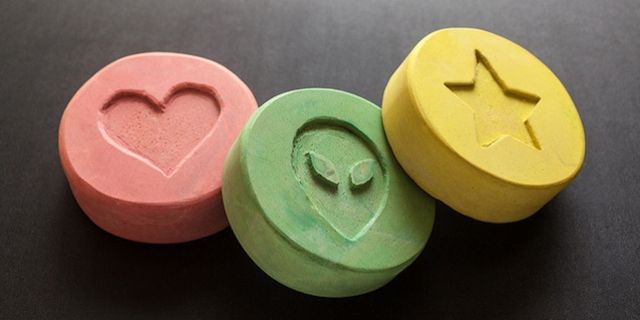A young person attends a music festival, decides to take drugs and dies. The media report on it; there are calls for pill testing. Politicians reject the idea.
This sombre cycle of events is becoming a staple news story as the summer festival season plays out.
On Saturday, it was a nineteen-year-old girl attending Sydney’s FOMO (Fear of Missing Out) Festival that lost her life. She is the 5th young person to die from a drug overdose at a NSW music festival since September 2018.
There were approximately 11,387 people attending FOMO, of which 146 were searched for drugs. Police allege that 54 people were found in possession of illicit substances.
The National Drug and Alcohol Research Centre has estimated that there have been around 100 drug-related deaths at Australian music festivals over the last 10 years.
What is pill testing?
Pill testing is an approach to harm reduction. Pill testing provides people with information regarding the content of illicit substances.
While the pill testing debate is polarising and highly controversial in Australia, it is not a new concept. The approach was first adopted in the Netherlands in the 1990s (and is now part of their national drug policy). Drug checking services are also available in Switzerland, Austria, France, Spain and Germany.
How does it work?
There is a range of different methods that can be used to test illicit substances, from basic DIY style testing kits to advanced pharmacological analyses.
However, we can gain an idea of how pill testing might operate in Australia by looking at how it was conducted during a trial undertaken at Groovin’ The Moo in Canberra last year.
Pill testing trial – GTM 2018
The first (and only) Australian trial of pill testing occurred during the Canberra leg of the Groovin’ The Moo Festival in 2018. The pill testing process that was adopted at the festival is as follows:
· When an individual enters the pill testing area, they are met by a ‘harm reduction worker’ who outlines the pill testing process. During this interaction, the harm reduction worker reinforces that there is no safe level of drug consumption.
· The individual then hands over the drug to a chemist to begin the testing. The chemist explains that the results are only applicable to the sample being tested.
· The sample is analysed by passing an infrared beam through the sample, which is then checked against a library of 30,000 substances.
· The drug is given one of three possible classifications: white (the substance is what the individual anticipated); yellow (the substance is different to what the individual anticipated); or red (the substance is known to be associated with harm, overdose or death, or the substance is unknown, ie a new drug).
· A medical practitioner relays this information and advises the individual of the risks and dangers associated with the drug (including drugs labelled as ‘white’)
· The individual is directed to a drug and alcohol counsellor who informs them of harm reduction strategies (including not taking the substance, or consuming a smaller dose)
· The individual is informed about an ‘amnesty bin’, where they can dispose of their drugs.
Read more about the final report here.
Benefits of pill testing
Tests conducted in the UK, the US and Australia all support the conclusion that pill testing can help people to consume drugs in a safer way. For example, the UK’s first pill testing trial found that one in five substances were not what the individuals believed them to be. When informed of this fact, two-thirds of individuals in possession of the ‘mis-sold’ substances chose to discard their drugs.
Pill testing advocates suggest that their approach supports harm reduction and prevention. They also suggest that pill testing allows for better monitoring and research by contributing to data about drug markets, which can directly inform prevention projects and campaigns.
An interesting perspective has recently been put forward by former Director of Public Prosecutions Nicholas Cowdery AM QC, who suggests that the ‘Government has an overall duty to protect the community, including by assisting members of it to avoid foreseeable harm. Adding drug checking to the mix of interventions for users does not prevent measures being taken against unlawful drug producers and suppliers’.
Opposing arguments
NSW Premier Gladys Berejiklian has maintained her opposition to pill testing. Her concerns centre around the idea that pill testing may give young people a ‘green light’ to take substances which could end up killing them.
Other common arguments against pill testing include the idea that it could begin to ‘normalise’ drug-taking behaviour or give a false sense of security to drug-users.
Key Takeaways
- Pill testing debates in Australia focus on reducing drug-related deaths at music festivals.
- The approach, aimed at harm reduction, informs users about the content of illicit substances.
- Australia's first pill testing trial at Canberra's Groovin' The Moo festival demonstrated a process involving analysis and counseling.
- Opponents, including NSW Premier Gladys Berejiklian, argue pill testing might normalize drug use.
- Advocates claim pill testing can save lives and urge a shift towards harm minimization policies.
Where to now?
The pill-testing debate continues to intensify across Australia. It essentially boils down to an international legal debate – should politicians and law enforcement continue to adopt the hard-line ‘say no to drugs’ approach; or should they embrace a new strategy focused on harm minimisation?
A protest calling for the introduction of pill testing in NSW is scheduled to be staged out the front of Sydney Town Hall on the 19th of January.
Closer to home, the Newcastle University Students’ Association (NUSA) is planning to reintroduce pill testing kits as part of a ‘suite of harm minimisation initiatives’. While the plan is still in development, 2019 NUSA President Kearnie Kelly outlined that students wanting to obtain a kit will have to attend a workshop with a drug and alcohol counsellor before receiving a kit.
If you need advice or representation for a drug-related or any other criminal matter please contact Hamilton Janke Lawyers 24 hours a day, seven days a week on 4038 1666 (office hours) or 0422 050 502 (24/7).
Written By

James Janke
James Janke is founding partner at Hamilton Janke Lawyers, and has more then decade of experience as a Criminal Defence Lawyer. Admitted to both the Supreme Court of New South Wales and High Court of Australia



